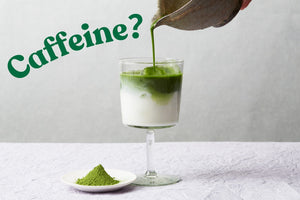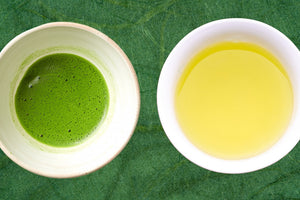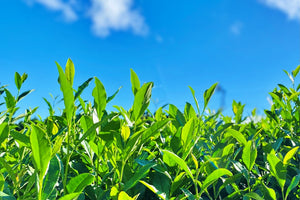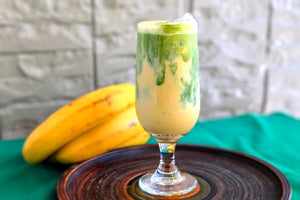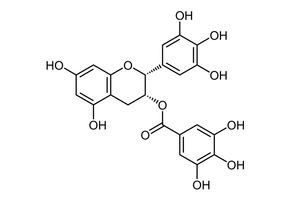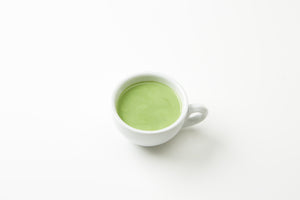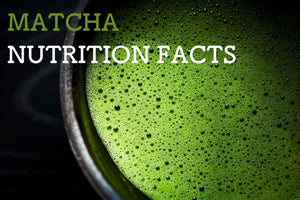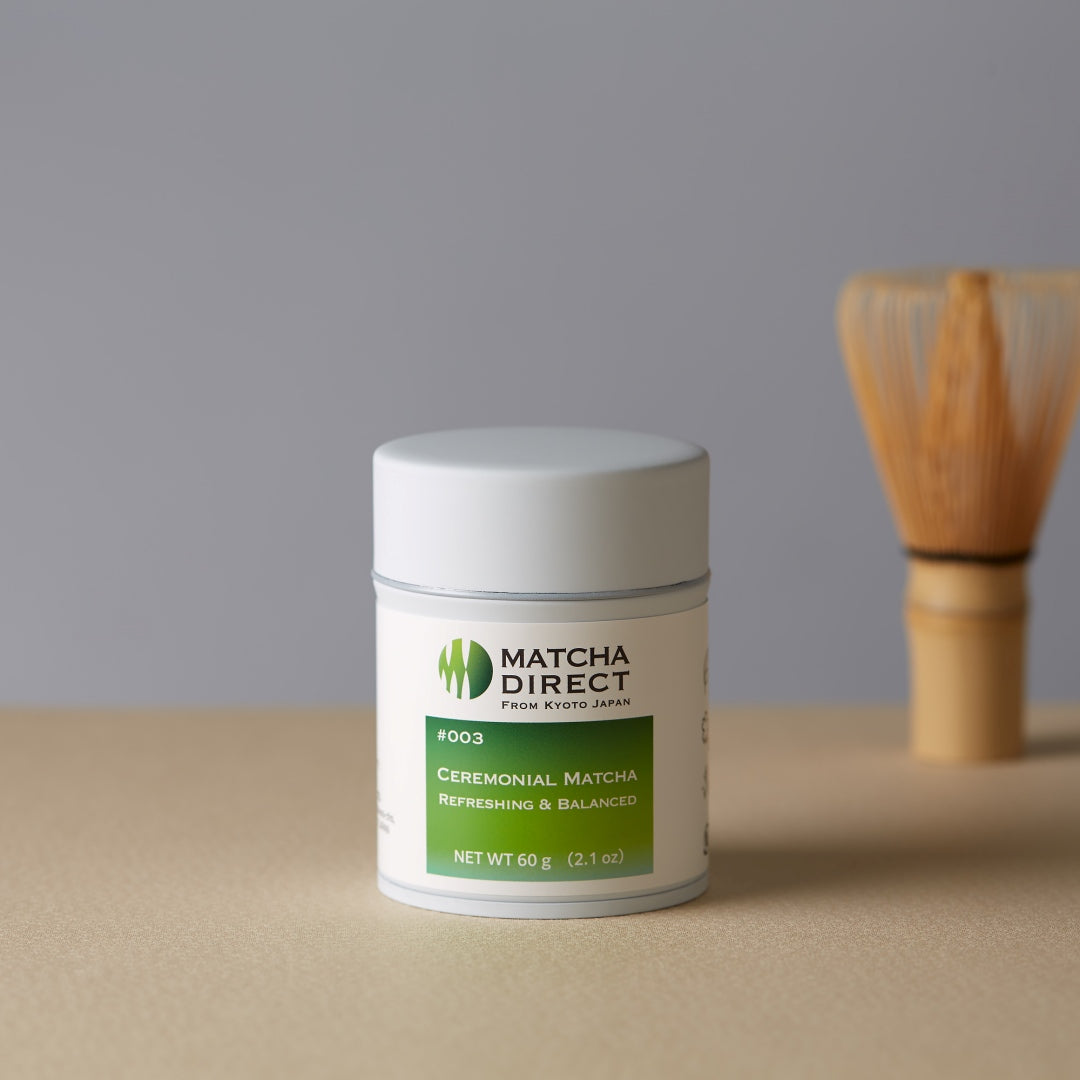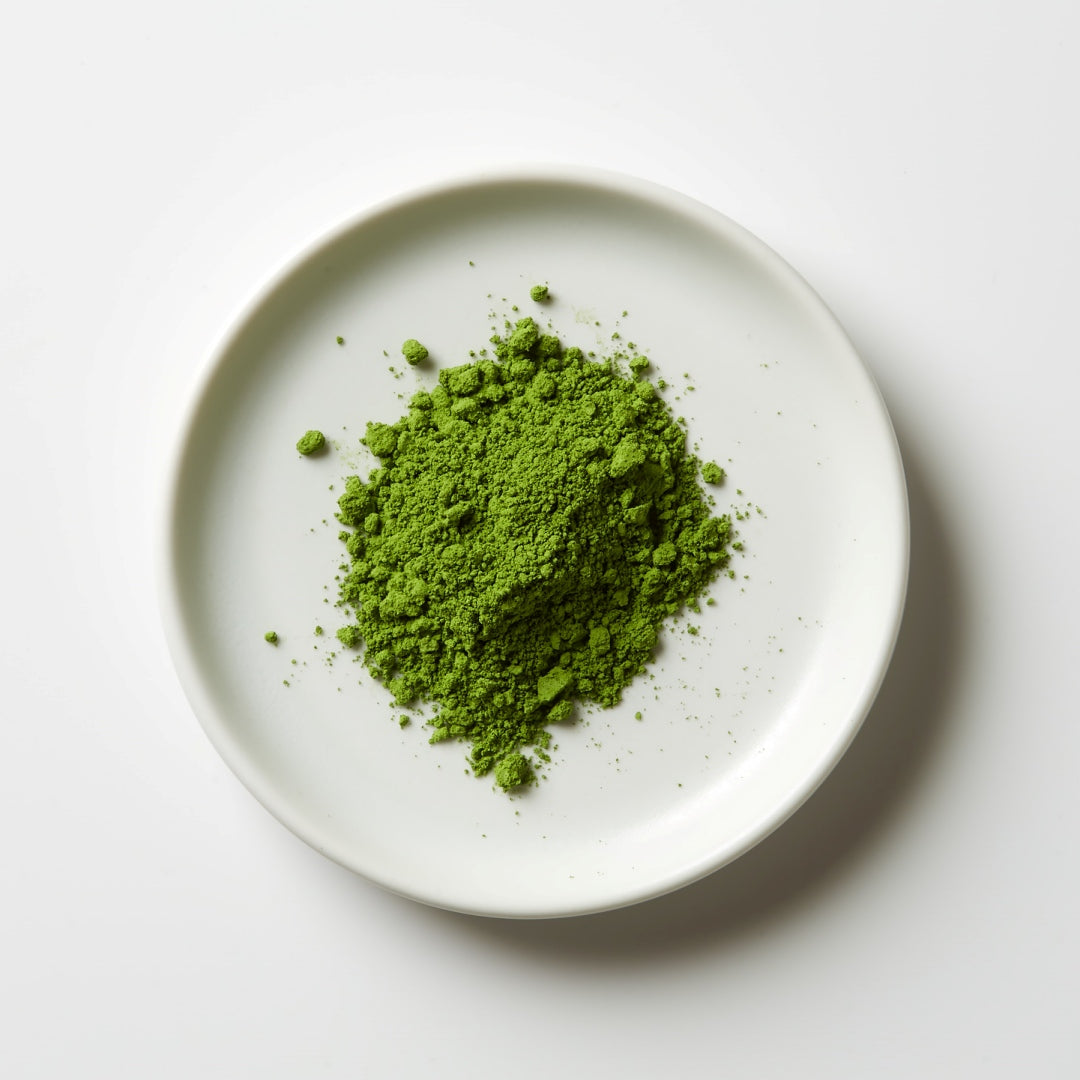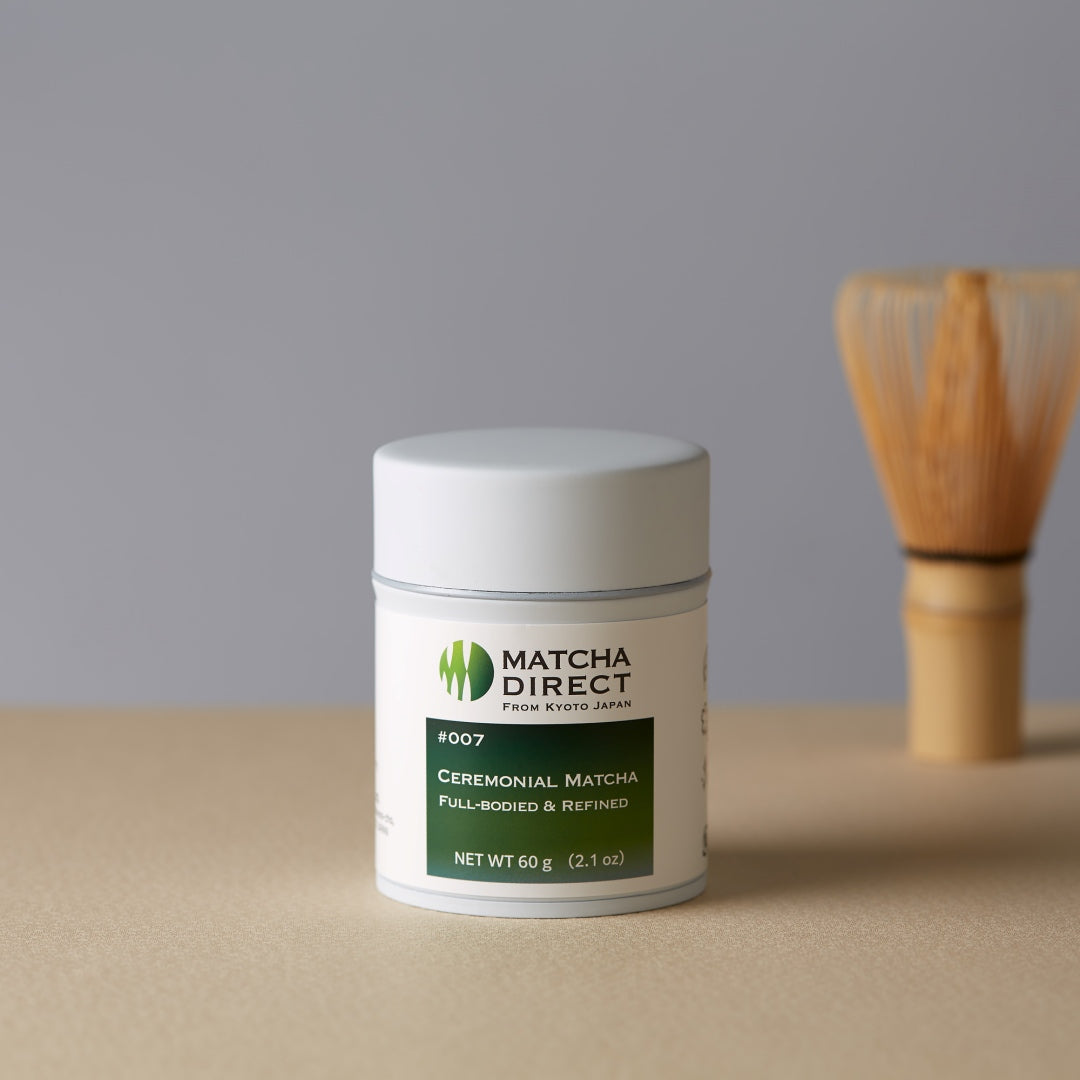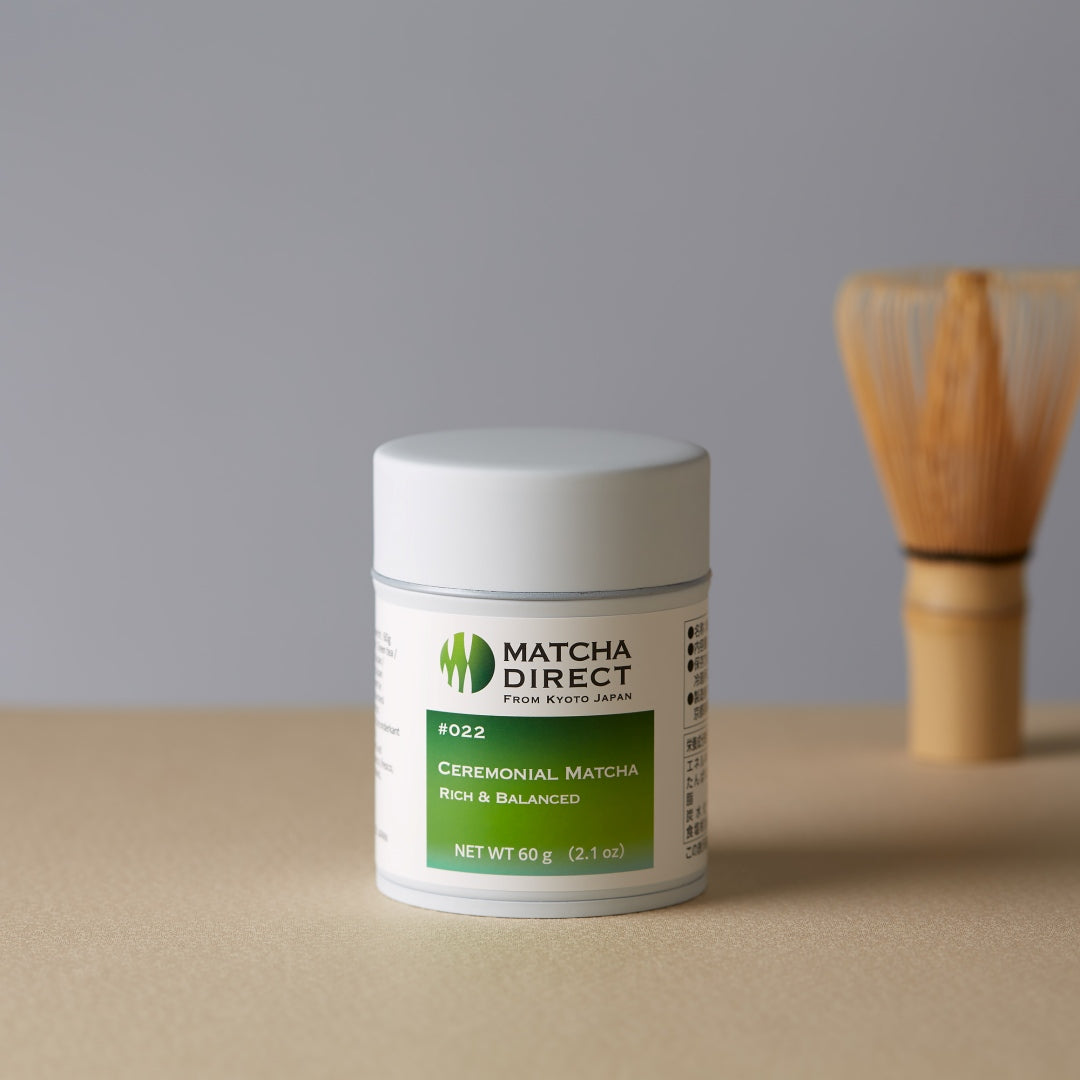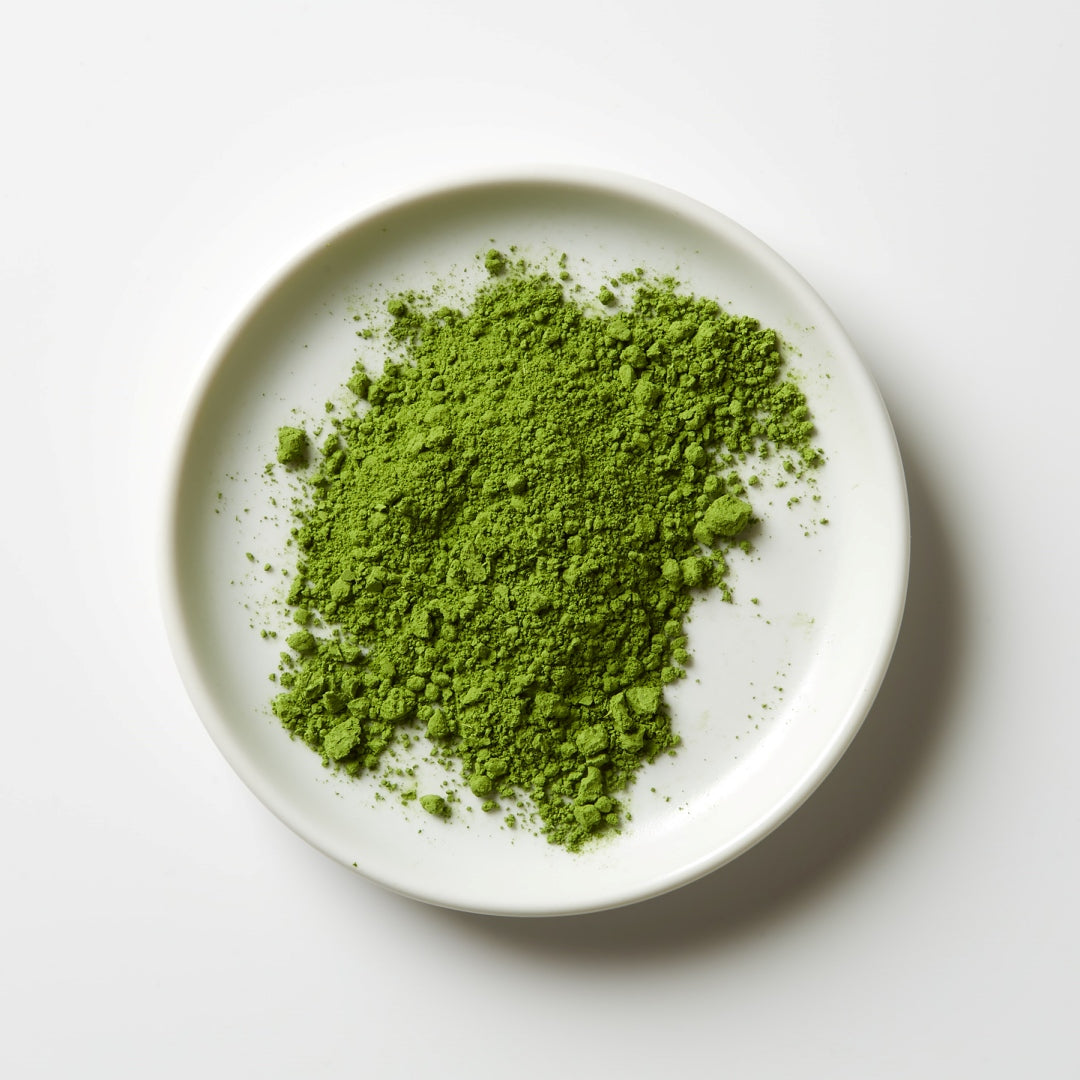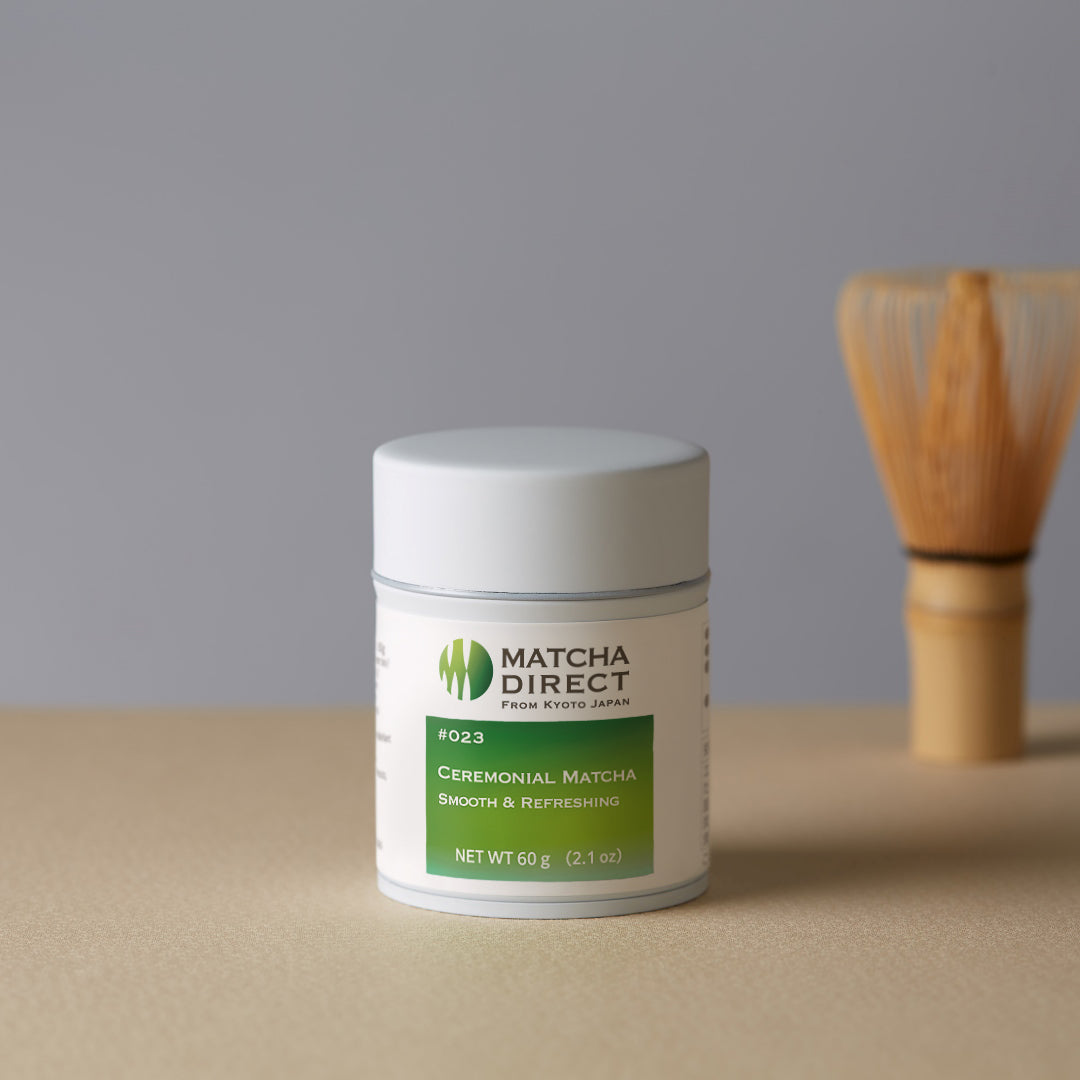Matcha vs. Gyokuro: What’s the Difference?

Both matcha and gyokuro are green teas that Japan proudly presents to the world, but when asked “what’s different about them,” many people may find they can’t answer right away.
In fact, the two differ in many ways, from how they are made and how they look to how they are drunk and even their nutritional components. By learning the characteristics of matcha and gyokuro, you can deepen the ways you enjoy tea and find hints for discovering the perfect cups for you.
In this article, we will clearly introduce how to choose based on your lifestyles and preferences, while comparing the differences between them from various perspectives.
How Matcha and Gyokuro Are Made
Both matcha and gyokuro are grown by a unique method called “covered cultivation,” in which tea fields are covered to block sunlight about 2–4 weeks before harvest.
This cultivation method suppresses changes in the components responsible for bitterness and astringency, making it easier to preserve the umami components contained in the tea leaves. Furthermore, by blocking sunlight, the color of the leaves becomes a deeper, more vivid green, resulting in a beautifully finished appearance.
While there are commonalities in cultivation method, there are clear differences between matcha and gyokuro in the way the leaves are processed after harvesting.
Matcha processing
Tea leaves grown by covered cultivation for matcha are steamed immediately after harvest to prevent oxidation (so-called fermentation) caused by exposure to air and to keep them in a fresh state.
Then, by drying the leaves without rolling them, they are finished with the shape of the leaf intact; this state becomes “tencha,” the raw material for matcha.
https://matchadirect.kyoto/blogs/matcha-101/what-is-tencha-the-raw-material-for-matcha
Next, this tencha is slowly ground into a powder using a stone mill, becoming the matcha you usually see.
Gyokuro processing
Gyokuro is finished through a process called “rolling”, in which the steamed tea leaves are carefully kneaded while being dried after harvest.
Through this rolling process, which differs from matcha, moisture is pressed out of the leaves to promote drying. At the same time, the leaf structure is broken down, making it easier to extract components and draw out umami and aroma.
The finished leaves are shaped thin like needles, characterized by a slightly glossy deep green color and delicate form.
Differences in How They Are Prepared
Matcha and gyokuro differ greatly not only in processing but also in how they are prepared (how they are drunk).
How to prepare matcha
Matcha is enjoyed in a unique style in which powdered tea leaves are whisked with hot water and drunk.
Place matcha in a tea bowl, pour in water at about 70–80°C, then whisk with a dedicated bamboo whisk (chasen), which brings out a mellow mouthfeel and matcha’s distinctive aroma.
Also, because the tea leaves are used as powder as they are, another major characteristic unique to matcha, not seen in other green teas, is that you can ingest all the nutrients contained in the tea leaves in their entirety.
How to prepare gyokuro
Gyokuro, on the other hand, is enjoyed by placing tea leaves in a kyusu teapot or similar, pouring in hot water, and slowly extracting the components.
Set the water temperature low, around 50°C during extraction, and by taking time to brew, the delicate umami and aroma inherent to gyokuro are drawn out thoroughly.
If brewed carefully, one of the true pleasures of gyokuro is experiencing how its flavor evolves from the first infusion through several subsequent ones. From the second infusion onward, if you raise the water temperature slightly and shorten the extraction time, it becomes easier to balance the taste.
Differences in Nutritional Components
Both matcha and gyokuro are known as green teas that contain abundant nutrients.
Among them, particular attention is given to the amino acid “theanine.” This is abundantly contained in leaves grown with sunlight blocked, and is the source of the mellow umami common to matcha and gyokuro.
In addition, both contain various vitamins and catechins, which are expected to have antioxidant effects, and they are also noted as drinks that allow you to easily take in nutrients that help maintain health when incorporated into daily life.
However, there are differences in the types and amounts of nutrients absorbed by the body between matcha-powdered tea consumed whole, and gyokuro, which is brewed with hot water.
Nutritional components of matcha
Since matcha is powdered tea leaves consumed as they are, its greatest feature is that you can take in all the nutrients contained in the leaves without waste.
A characteristic unique to matcha is that you can ingest even nutrients that do not dissolve readily in hot water. For example, water-insoluble dietary fiber—which is abundant in tea leaves—along with vitamins A and K, is a good example.
These are difficult to take in with extraction-type teas, so they are regarded as being particularly abundant in matcha, which is consumed as the entire tea leaf.
https://matchadirect.kyoto/blogs/matcha-101/matcha-nutrition-facts
Nutritional components of gyokuro
Gyokuro also contains nutrients derived from green tea, such as theanine and catechins.
However, since gyokuro is a style in which the tea leaves are extracted and the liquor is consumed, nutrients that do not dissolve readily in hot water and components that are difficult to extract remain in the spent leaves. Therefore, compared to matcha, which is consumed leaf and all, it can be regarded that there are limits to the types and amounts of nutrients that can be taken into the body.
On the other hand, since gyokuro is brewed slowly at low temperature, it is said that heat-sensitive vitamin C tends to remain in relatively higher amounts. For this reason, it is considered that you can take in nutrients by a different approach from matcha.
Differences in Caffeine Content
In addition to nutritional components, many people may also be concerned about how much caffeine each tea contains. Both matcha and gyokuro are tea types that contain a lot of caffeine; both are grown by covered cultivation using young leaves that are shaded from sunlight, so they naturally tend to have higher caffeine content.
Caffeine in matcha
Since matcha is consumed as powdered tea leaves, all the caffeine contained in the leaves is taken into the body.
When 2 g of matcha powder, a typical amount for one cup, is used, the caffeine content is said to be about 60 mg. Sencha is said to contain about 20 mg of caffeine per cup, which shows how much caffeine matcha contains.
Caffeine in gyokuro
Gyokuro, on the other hand, is known for having even more caffeine than matcha.
Although there are differences depending on how it is brewed and how much leaf is used, when 10 g of leaves are used for extraction, the caffeine content can reach around 160 mg.
Characteristics of caffeine in matcha and gyokuro
“L-theanine,” which is abundantly contained in matcha and gyokuro, is said to moderate the absorption of caffeine and soften excessive stimulation. As a result, compared to coffee and the like, these teas provide a gentler and more sustained sense of alertness. They are also enjoyed when one wants to maintain concentration or relax in a calm, focused state.
However, even if it is gentle in its effects, it does not mean the amount of caffeine itself is reduced. According to the U.S. Food and Drug Administration (FDA), the upper limit of daily caffeine intake for adults is up to 400 mg. Be careful not to overdrink, and pay attention to timing, such as before bedtime.
Differences in Flavor
Both matcha and gyokuro are teas in which “umami” and “sweetness” stand out, but each has its own distinctive in mouthfeel and texture.
Flavor of matcha
Matcha is characterized by a creamy, rich mouthfeel and deep umami.
High-quality matcha has a “shaded leaf aroma”, a fresh, green, grassy note, and its bitterness is subdued because shading cultivation suppresses the formation of catechins. The gentle sweetness and umami derived from theanine become more pronounced. Matcha is distinctive for the complex, well-balanced flavors that unfold as soon as it enters the mouth.
Its rich taste is not limited to drinking; it is also used in cooking and sweets and is enjoyed around the world.
Flavor of gyokuro
Gyokuro is a green tea notable for its syrupy mouthfeel and refined, rich umami.
As with matcha, it has a “shaded leaf aroma,” and its astringency and bitterness are reduced, allowing delicate sweetness and deep richness to unfold across the palate.
Another major characteristic is that you can enjoy how the taste changes with each infusion, as the flavor varies greatly depending on the extraction temperature and time.
Frequently Asked Questions (FAQ)
Q: Which should I choose, matcha or gyokuro?
A: The key is to choose according to your flavor preferences and the situation in which you’ll drink it.
Situations where matcha is recommended
・When you want to enjoy a rich taste and an authentic matcha experience
・For a morning energy boost
・When you want to use it in smoothies, lattes, sweets, etc.
Situations where gyokuro is recommended
・When you want to enjoy the experience of brewing tea leaves in a kyusu(tea pot)
・For a luxurious tea time to savor deep richness at leisure
・When you want to enjoy the transition of flavor over multiple infusions
Matcha’s appeal lies in its convenience and broad versatility, while gyokuro is a tea for enjoying delicate aroma and flavor and the act of brewing itself. Please choose according to your purpose.
Q: Which is healthier, matcha or gyokuro?
A: Both contain nutrients derived from green tea, such as theanine and catechins, but there are slight differences in components depending on the way of consumption.
Since matcha is consumed by drinking the whole tea leaf, it allows you to efficiently take in not only theanine and catechins but also components that are not easily water-soluble, such as vitamins A and K and dietary fiber. On the other hand, gyokuro is brewed slowly at a low temperature, which helps preserve components that are sensitive to heat, such as vitamin C. This allows you to enjoy a gentle flavor while naturally taking in its nutrients.
However, it is difficult to make a clear distinction in terms of superiority, such as determining “which is more beneficial to health,” so it is recommended to choose according to your purpose and how you drink it.
Q: If using them in cooking or sweets, which is better?
A: In terms of versatility for cooking and sweets, powdered matcha is overwhelmingly easy to use and is widely applied to sweets, drinks, and dishes. Its vivid green color and faint bitterness add accents to a variety of recipes, not just sweets and lattes.
Gyokuro, on the other hand, is generally intended to be extracted and drunk, so its use in cooking is limited. However, in dishes that use green tea, there are cases where gyokuro’s characteristic mellow and delicate flavor can be put to good use.
Summary
Matcha and gyokuro have points in common, and each also has distinctive appeal.
Matcha is a richly flavored cup in which you can enjoy the tea leaf as a whole. Not only can you take in the nutrients efficiently but also it can be used in a wide range of applications such as drinks and sweets.
Gyokuro, on the other hand, is perfect for leisurely enjoying delicate umami and aroma. It is a tea that richly colors quiet moments.
Whichever you choose, selecting tea leaves of assured quality is important in order to fully savor their appeal.
At MATCHA DIRECT, we carefully pick high-quality matcha with close attention to origin and processing. If you would first like to experience the profound flavor of matcha, please take a look at MATCHA DIRECT’s matcha lineup.





